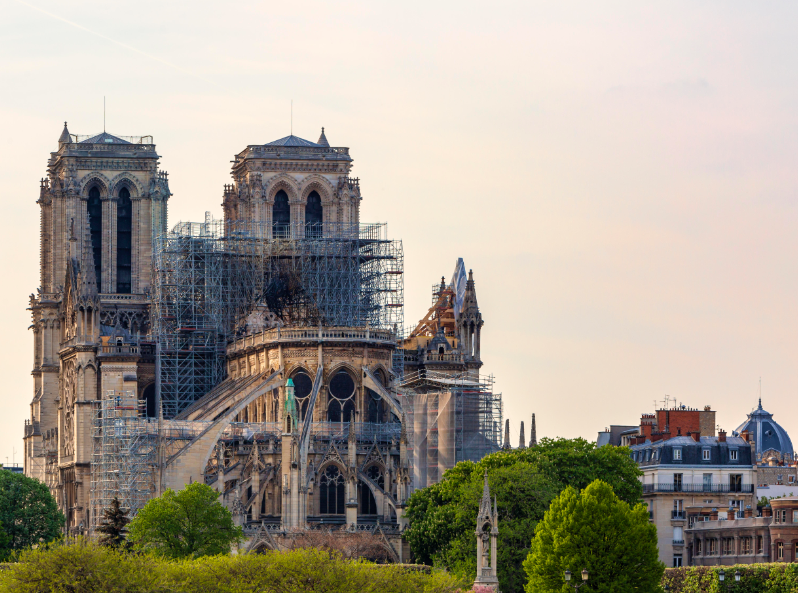One fateful night in April 2019, the upper story of the French Gothic Notre Dame cathedral caught on fire, severely damaging the roofing, walls, and spires, causing many historical relics and art to suffer smoke damage. After more than twelve hours, four hundred firefighters subsided the flames, but Notre Dame was still standing though the fire had caused the roof to cave in and the interior to be gutted (Architectural Digest). The next morning, Emmanuel Macron, the Preisdnet of France, promised that the cathedral would be rebuilt in five years. As Dana Thomas from AD states, it would be “no small feat, given that the original construction took nearly two centuries.”
Many watched live news coverage of Notre Dame on fire that consequential spring in 2019 including Mr. Harvey, an English teacher at Quakertown Community High School and a musician. In an interview, Mr. Harvey said, “I was watching [the fire] on the news when I could…I was horrified…my background is in music and Notre Dame was a[n] important place in the history of music because it is where polyphonic music was born.” Polyphonic music is the combination of two simultaneous melodic lines, and the term “polyphony” derives from the Greek word for “many sounds.” Mr. Harvey expressed how much he appreciated the cathedral and stated, “Seeing [that] the roof was on fire and the spire was coming down, my thoughts, and probably the thoughts of [other] musicians, [were] ‘are we ever going to experience that again?’”
Throughout the half-decade of restoration, two thousand people have worked tirelessly to rebuild the “Gothic Jewel” of Paris (Elle Decor). The restoration of Notre Dame is a “testament to the continued artistry of nearly 1,000 craftspeople who have kept ancient medieval skills alive in an age of modernized construction needs,” states Rachel Silva of Elle Decor, which has been crucial to reinstating the intricate medieval spires, finials, and overall architecture of the cathedral.
Now, after five years and seven months of construction and approximately $800 million (approximately 756 million euros), the magnificent 860-year-old cathedral finally opened to the public on December 8th. “In total, 849 million euros ($928 million) were raised in donations from 340,000 donors in 150 countries,” says CNN writer Claudia Colliva, and every cent was worth it. Upon asking Mr. Harvey if he thought that the $800 million was worth it for restoring the cathedral, he replied, “Considering its historical significance, I think…it was done for the right reasons… [because] we’re talking about a building that gives people lots of joy… it’s not all about people making money, you know, it’s about ourselves and being able to recover from something horrible.”
One year before the opening of Notre Dame, in December 2023, a golden rooster “reimagined as a phoenix, [was] returned to the top of the cathedral’s spire, symbolizing Notre Dame’s rebirth” (AP), after the catastrophic fire, giving Notre Dame a finishing touch that millions of people will look upon and remember the ambitious feat that brought the magnificent chapel back from ashes five years later.















